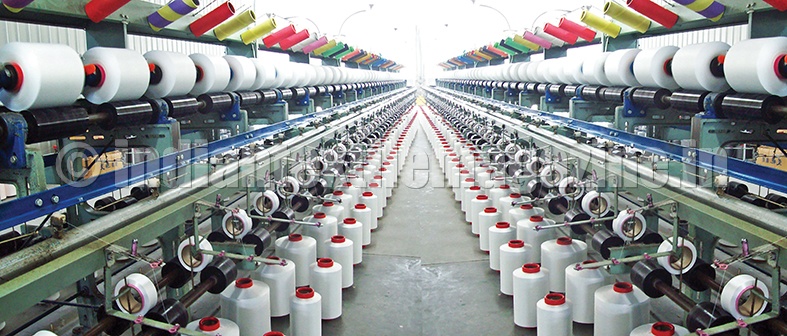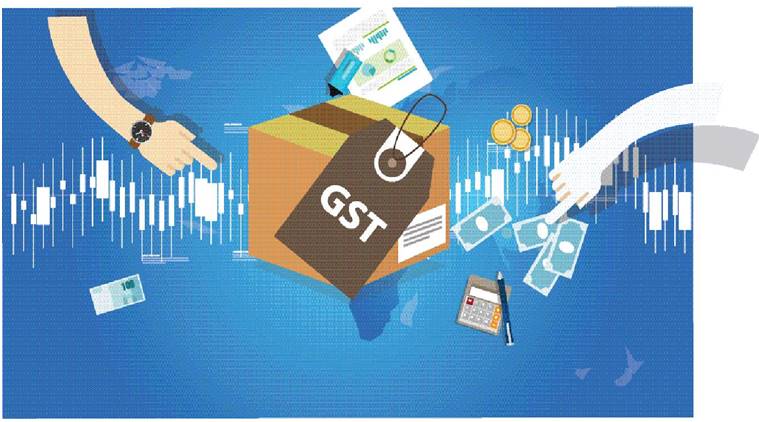
On the midnight of July 1 this year, the NDA government launched India’s biggest-ever post-independence tax reform in the form of the Goods and Services Tax (GST).
The indirect taxation replaced multiple central and state government taxes throughout the country. Under this, goods and services are taxed at rates of 0%, 5%, 12 %, 18% and 28%.
A brief history of GST:
The system was initially conceptualized in 1986 by the Rajiv Gandhi government through the introduction of the Modified Value Added Tax. During the Atal Bihari Vajpayee government, a task force was formed under Vijay Kelkar, which, in 2005 recommended the reform’s rolling out. The work continued further in the UPA regime, as the then Finance Minister P Chidambaram’s plan of a pre-2014 roll-out couldn’t be implemented due to CPM leader Asim Dasgupta’s resignation from the GST Council following CPM’s downfall in Bengal.
After the Modi government coming to power in 2014, Chidambaram’s successor Arun Jaitley brought the GST Bill in Parliament, which was passed in August 2016. All states, except Jammu and Kashmir, passed their GST laws before July. The valley state too passed their bill six days after the reform was introduced.
While the country’s 13th President Pranab Mukherjee and PM Narendra Modi, along with some business personalities like Ratan Tata attended the launching ceremony, the opposition boycotted the event.
The updated tax slab:
In November, the GST Council decided to lower the tax rates of 177 items falling under the highest slab of 28% to 18 %.
No Tax:
Goods:
Milk, fruits, vegetables, bread, salt, bindi, curd, sindoor, natural honey, bangles, handloom, besan, flour, eggs, stamps, printed books, judicial papers, and newspapers.
Services:
Hotels and lodges with a tariff below ₹ 1,000.
5% Tax:
Skimmed milk powder, fish fillet, frozen vegetables, coffee, coal, fertilizers, tea, spices, pizza bread, kerosene, ayurvedic medicines, agarbatti, sliced dry mango, insulin, cashew nuts, unbranded namkeen and lifeboats.
Services:
Transportation like railways and flights, Standalone AC and non-AC eateries and those which serve liquor and takeaway food. Also restaurants in hotels with a room tariff less than ₹7,500.
12% Tax:
Goods:
Frozen meat products, butter, cheese, ghee, pickles, sausage, fruit juices, namkeen, tooth powder, medicine, umbrella, instant food mix, cell phones, sewing machine and man-made yarn.
Services:
Business class air tickets.
18% Tax:
Goods:
Flavored refined sugar, cornflakes, pasta, pastries and cakes, detergents, washing and cleaning preparations, safety glass, mirror, glassware, sheets, pumps, compressors, fans, light fitting, chocolate, preserved vegetables, tractors, ice cream, sauces, soups, mineral water, deodorants, suitcase, briefcase, vanity case, oil powder, chewing gum, hair shampoo, preparation for facial make-up, shaving and after-shave items, washing powder, detergent, stones used in flooring, marble & granite, sanitary napkins, leather clothing, wrist watches, cookers, stoves, cutlery, telescope, goggles, binoculars, oil, powder, cocoa butter, fat, artificial fruits, artificial flowers, follage, physical exercise equipment, musical instruments and their parts, stationery items like clips, some diesel engine parts, some parts of pumps, electrical boards, panels, wires, razor and razor blades, furniture, mattress, cartridges, multi-functional printers, door, windows and aluminium frames.
Services:
Restaurants located inside hotels with tariffs of ₹7,500 and above, outdoor catering (input tax credit to be available), IT, telecom, financial services and branded garments.
28% Tax:
Goods:
Over 200 products, including sunscreen, pan masala, dishwasher, weighing machine, paint, cement, vacuum cleaner. Other items include automobiles, hair clippers and motorcycles are kept in this category.
Services:
Five-star hotels, racing, movie tickets and casino & race betting.
GDP and GST:
In August, India’s GDP slumped to a three year low of 5.7 per cent as manufacturing slowed. During the same month, a Reuter’s survey predicted that the industrial activities may be dampened in coming months.

While Chidambaram and Manmohan Singh criticized the government for the poor figures, Centre’s policy think-tank NITI AYOG assured that the July-September quarter numbers will soar to 7.75%. Global financial agencies like Fitch, ADB and World Bank lowered India’s growth projections around October. Things improved last month when the second quarter growth figures rebounded to 6.3%. Fitch and ADB responded by cutting the GDP forecast down to 6.7%.
How other sectors reacted to this ‘game-changer’ tax reform:
Agriculture:

As for the updated fourth tax slab list, products like fruits, vegetables, bread, salt, natural honey. On the other hand, frozen vegetables, coffee, fertilizers, tea, spices, sliced dry mango and cashew nuts to attract 5% of taxation.
Textile Industry:
In October, the Apparel Export Promotion Council made a presentation to the Parliamentary Standing Committee on Commerce in New Delhi, where they discussed the likelihood of shipment decline and job losses. In August, while Telangana pitched for incentives and land allocation for a mega-textile park, reports emerged of traders exporting their products at higher prices.

The GST posed to be an initial headache for the farmers and crop protection product manufacturers as 18% tax was imposed on pesticides. On 9th September, the agricultural fraternity protested outside the GST Council meeting venue in Hyderabad and demanded that raisins, coriander seeds and dried red chillies should not be taxed.
There were protests in Gujarat textile hubs during June, where the stakeholders printed slogans like ‘No GST, No Registration’ on the garments. In November, the goverment announced the post GST rates for claiming a rebate of state taxes under the scheme for Remission of State Levies on exports of ready-made garments and made-ups.
Manufacturing: The sector, already witnessing a slowdown due to demonetisation, faced another setback in the form of GST. While building components like stones, marble and granite have now been kept under the 18% tax slab, the RBI’s fourth bi-monthly monetary policy review of 2017- 18 stated that the new tax might delay the sector’s investment revival. In September, the sector pulled down the Index of Industrial Production to 3.8%.

However, things got rosier in November, when manufacturing recorded the strongest improvement in 13 months, due to a reduction in GST rates. The Nikkei India Manufacturing Purchasing Managers’ Index rose from 50.3 in October to 52.6 in November.
Automobile: While luxury carmaker Ford started discount sales from May, Mercedes Benz, Audi, Jaguar, BMW and Isuzu announced price cuts on select models that benefit from a lower tax incidence through GST. Around June, Finance Minister Arun Jaitley declared that all non-electric cars and two-wheelers will be taxed at a base rate of 28%.

Non-electric cars were taxed an additional cess of 1-15%. SUVs and luxury cars will all attract 15% cess. Two-wheelers with engines bigger than 350 cc to pay an additional cess of 3%. The new rates were implemented from September. The sector registered back-to-back robust sales figures in August. However, in November, the vehicle export hit a roadblock as the makers were unable to file claims since July and pending sum had crossed over Rs 1,000 crore.
MSME: The Small and medium-sized enterprises have been hurt by the GST since July, resulting in only 5.7% economic growth in June. The industry, contributing 50 per cent of the industrial output and 42 per cent of export earnings, constitutes businesses with a lower threshold limit of Rs 20 lakh and used to enjoy exemption from paying indirect taxes.

While GST brought positives like common taxation and relief from excise duty, VAT and service tax, the industry faced difficulties on filing monthly returns. On October, the GST Council allowed these enterprises to file quarterly returns.
Aviation:

With the introduction of GST, air travel in Business Class now attracts 12% Service Rate Tax. On the other hand, the same rate is now at 5% in the economy class.
Pharma and Healthcare: On December 14, The Indian Medical Association urged the government to exempt health care services offered by private hospitals from the GST. The organization’s president, Dr KK Agarwal also stated that healthcare services provided by all types of clinics are exempted from service tax under a 2012 notification.

So far, insulin and medicines have been kept under the 5% and 12% tax slabs. In the Ayurvedic sector, there were initial fears of the products costing five-seven per cent more, after they were kept in the 12% tax bracket. The Ayurveda Medical Association of India in June said that the high rate will make ayurvedic, Siddha and Unani medicines expensive. Despite a 7% reduction in prices of unbranded medicines in October, there were reports of the drugs being sold in high costs.
Telecom: The telecom sector was kept in the 18% taxation category in May. The Debt-ridden players expressed disappointment. The Cellular Operators Association of India said that this taxation would likely slow down the planned infrastructure rollouts and will affect government initiatives like Digital India, Cashless India.

They also said that the sector pays around 30 per cent of its earnings in taxes and levies. Till May, consumers were charged 15% in form of tax and cess over their phone bills. The sector’s total debt, at that same time, was at around Rs 4.5 lakh crore, while revenues were around than half this.
IT Sector: The Information Technology fraternity has also been placed under the 18% slab. It has also been given the provisions of claiming input tax credits for buying services. NASSCOM, the industry’s apex lobby group, in June said that dealing with the compliance issue might make the new taxation difficult.

KPMG India said, “For IT, taxes are going from around 15 per cent to 18 per cent for services. Now, this is unlikely to impact consumers majorly. Buyer can take input credit for services used, but there are issues.”
GST and Gadgets: The household gadgets also couldn’t save themselves from the tax onslaught.
While mobiles have come under the 12% slab, physical exercise equipment, cookers, stoves, musical instruments and their parts, functional printers, vacuum cleaners have all been included in the 28% category, guaranteeing more spending from the Indians.
Banking Sector: The banking activities, insurance and investments such as real estate, mutual funds, are now charged from 15% to 18%. In banks, one will have to pay now Rs 3 more for every Rs 100 paid as transaction charges.

Also, banks like SBI introduced or increased service charges for multiple transactions exceeding monthly quotas.


.jpeg)

